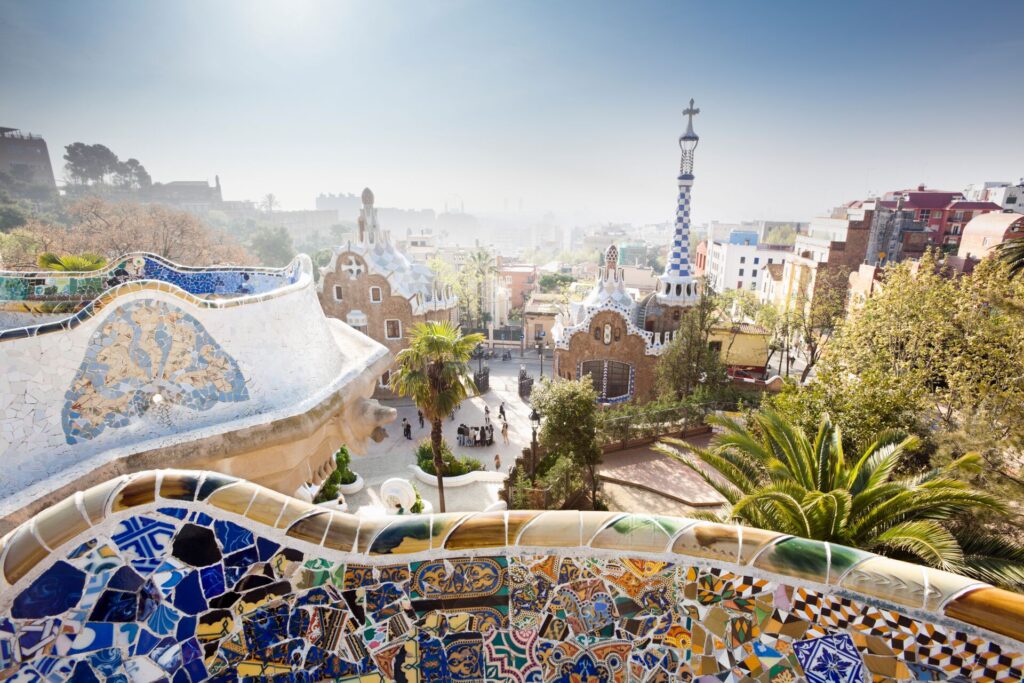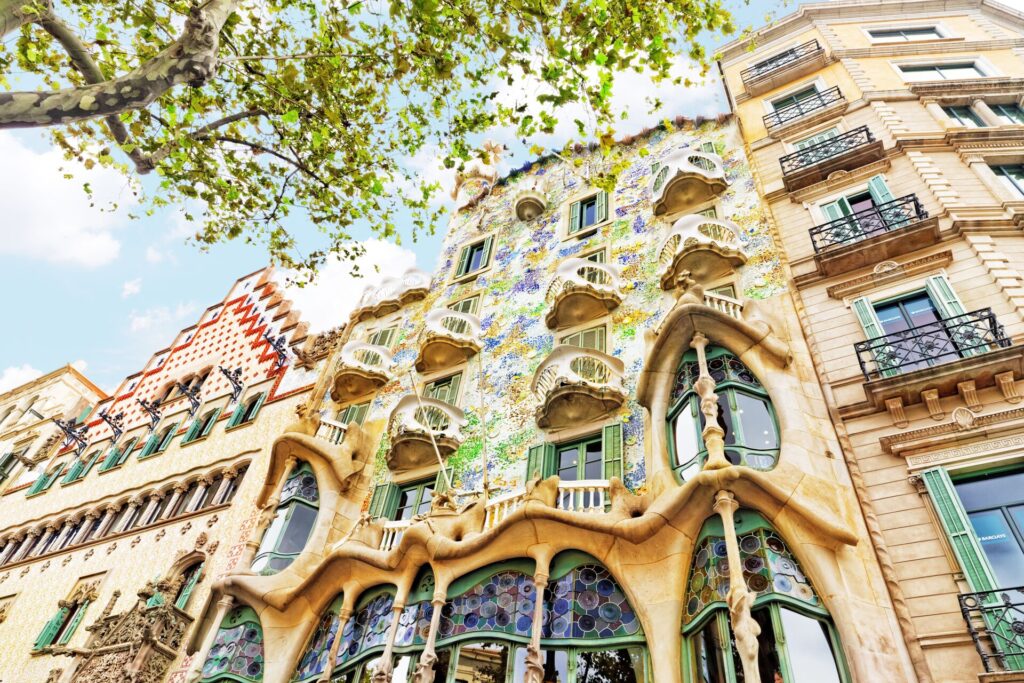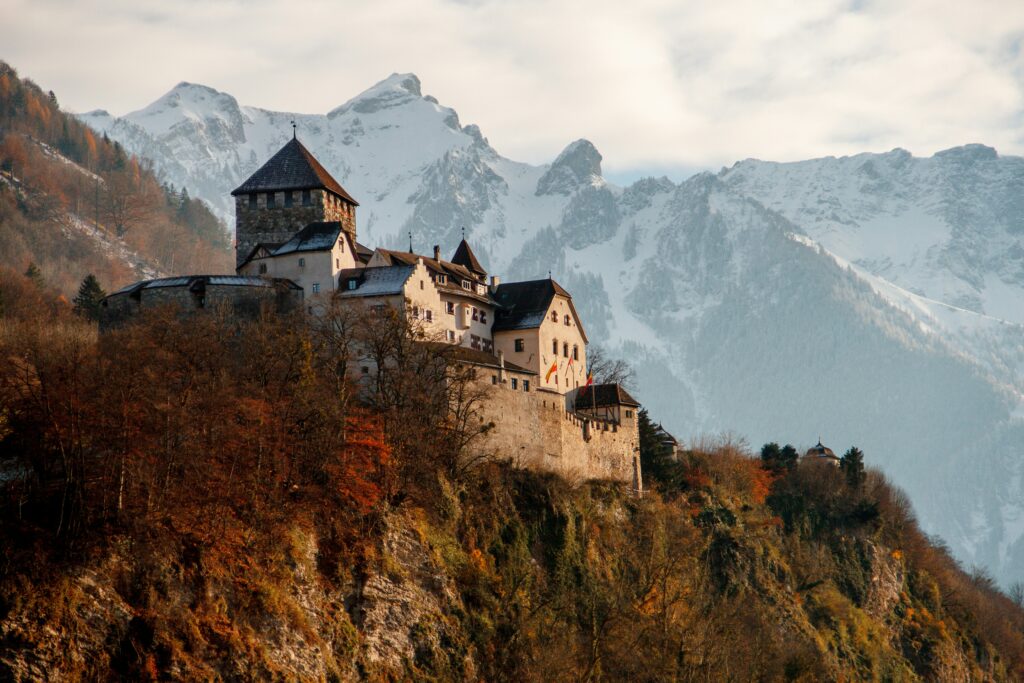Barcelona is renowned as a vibrant hub of artistic expression and architectural wonders. At the heart of its allure lie the magnificent works of Antoni Gaudí. A Gaudi Barcelona exploration is simply not to be missed, to truly appreciate his visionary creations that have left an indelible mark on the cityscape.
We spoke with Amada, a Spanish native and Barcelona Local Expert for over 20 years. She tells us more about this renowned Catalan architect, and talks us through some of the great Gaudi works that you must not miss.
“With Gaudi, nothing is by coincidence,” Amada says. “Everything has a reason, a motive. Every little detail is considered, and nothing is there by chance.”
Don’t miss our September Sale – explore Barcelona’s unique architecture for less

Antoni Gaudi – An architectural legend
Gaudi’s distinctive architectural style seamlessly blends organic and geometric elements, showcasing intricate details, vibrant colors, and a harmonious integration with nature. His extravagant, shapeshifting structures, drawing on a wide variety of influences, led him to become one of the most famous architects of the early 20th century. Antoni Gaudi was also a leading contributor to bringing Art Nouveau into Spain, and creating the country’s own interpretation of the art movement; Modernisme. Take the time to explore Gaudi buildings in Barcelona and you’ll be drawn into a world of art, history and storytelling.
“Gaudi did not have a happy life,” Amada tells us. “He suffered from rheumatism from childhood and had to go slowly.” According to researchers, this is partly why he became such a good observer.
“He had plenty of time to watch how the trees and leaves grow, and how nature developed around him. He later came to the conclusion, that nature ‘teaches us how to do things.’
“Gaudi would say ‘look around, nothing alive is straight. The trees are not straight, and they don’t fall. The human body is not a straight line or the animals. Why should my buildings be straight?
“So, the lines of curves that he used are from nature. The hyperboloid, the paraboloids, the conoid and all these geometric figures. He used them because they exist in reality. Straight lines are not really the good ones, they’re in fact weak and insufficient.”
Explore Barcelona on: Best of Spain & Portugal
You might be interested to read: 9 reasons why Best of Spain & Portugal is a simply unmissable tour
1. La Sagrada Familia

For travel inspiration: Spain destination guide
No mention of Gaudi can be made without talking about the Sagrada Familia. This famous church and architectural marvel is one of his most world-renowned works. It is considered to be the symbol of Barcelona by many residents.
The basilica illustrates Gaudí’s belief that nature is a divine creation. He aimed to unite Christian speech and biblical parables with intricate natural symbols gracing every column, pinnacle and stained-glass window. The church is a striking example of Gaudi’s use of the hyperboloid vault. This is the
The Gaudí House Museum, located within the Park Güell in Barcelona, is a historic home museum that houses a collection of furniture and objects designed by the Spanish architect Antoni Gaudí. It was the residence of Antoni Gaudí for almost 20 years, from 1906 till the end of 1925.curve created when a double cone Is sliced vertically, creating fairly high vaults. Gaudi used this to create pillars that resemble the structure of of tree complete with branched tree trunks.
The result is a stunning feat of architecture that, despite its incomplete state and ongoing construction spanning nearly 140 years, has emerged as one of Spain’s most frequented landmarks.
Catalan artist Josep Maria Subirachs provided the sculptures, carving 100 stone figures and made four vast bronze doors for the church’s west facade.
“When people see the Sagrada Familia for the first time, it’s more than they expect, people sometimes cry,” Amada tells us. “It’s like nature in architecture, a forest made of rock. It is really impressive and beautiful.”
Discover Gaudi works whilst in Barcelona on: Highlights of Spain
2. Colonia Guell

Located 20 km outside the city, the village of Colonia Guell plays an important part in the Gaudi Barcelona story. “The industrial tycoon Eusebi Guell was the first client and subsequent patron of Gaudi,” Amada tells us. “In fact, he was a bit of father figure. Gaudi was a gifted person, but he also had this man behind him, supporting him when he doubted himself.
“Mr Guell wanted to take his textile factory out of the city to escape the unions. He bought the land, constructed the factory and housing for the workers and Gaudi was commissioned to build the church.
“The church was never finished,” Amada explains. “Gaudi only did the crypt and that took him 14 years (1898 – 1914). But even for only the crypt it is extremely worth going to see.
“Why? Because that work there was the lab for La Sagrada Familia. Gaudi was gaining knowledge, researching materials, the structure of the columns, all in the little crypt in Colonia Guell. In fact, if he had completed the Colonia Guell church, it would probably have been a scale model of La Sagrada Familia. That’s why it is so important.”
Explore at a leisurely pace on: Easy Pace Spain
3. Casa Vicens
View this post on Instagram
“Casa Vicens was the first house Gaudi constructed after his university studies,” says Amada of this colorful art nouveau house built between 1883 and 1885. “Vicens was a businessman who wanted to have a summer house in Barcelona and asked Gaudi to build it.
A highlight of any Gaudi Barcelona tour, she explains that “Gaudi made this small house with a focus on the garden that extended in front, with a waterfall, the atmosphere of the trees and the flowers.
“The house brings outdoors indoors. The same Ivy leaves or carnations or whatever Gaudi found on the land he put it into the house, on the walls, inside the bedrooms in paper mache. It is really delightful.”
Discover Barcelona, San Sebastián and Madrid on: Northern Spain
Save up to 15% on select tours in our Black Friday sale.
4. Bellesguard
“The land where Bellesguard stands, was originally the site of the castle of the 15th century King of Aragon – King Martin, the first King of Catalonia,” Amada tells us. In the upper part of Barcelona city, with stunning views out across the Mediterranean, the site was chosen for its cleaner, healthier air.
“The castle is long destroyed but, when asked to build a new house there, Gaudi said ‘I’m going to do the replica of the history of Catalonia.’
“Gaudi was Catalan, and this heritage is evident in the house – it’s like the expression and representation of the whole Catalan history. He made a castle for this new family, and it is so authentic of the Catalan mentality, it is an important and interesting site to visit.”
Discover Iberia on: Grand Spain & Portugal
You might enjoy: Insight investigates: Why Spain is considered the most passionate of all European destinations
5. Palau Guell

A somewhat lesser-known masterpiece to be found on a Gaudi Barcelona exploration, and one of his most original buildings is Palau Guell, or the Guell Palace. Located in the old part of the city in the La Ravel district, this was the aforementioned Güell’s exquisite family home.
Built in the part of the city that was not fashionable for very wealthy families, the Guell’s wished to enlarge their grandparents’ house “They asked Gaudi to connect with the original house and attach a palace for them,” Amada explains. “So, between 1900 and 1909, he created a palace, which is a very interesting Gaudi Barcelona work, in that it looks more towards the interior.”
The building’s exterior is somewhat understated and very lightly decorated. The surprise lies in its lavish interior. “Outside was home to workers, prostitutes and people of a lower class and he didn’t want the family to and the kids to absorb that atmosphere. So, the palace looks inside, and inside is fantastic. The amount of furniture, the architecture is really worth a look. Rooms are distributed around a central hall, like an internal courtyard which serves as a source of light.”
Discover this on: Spanish Heritage
The Big Tour Sale is on now – save up to $1,500 per couple on worldwide trips.
6. La Casa Calvet
“La Casa Calvet is interesting as it is an apartment building,” says Amada. “Built for the Calvet textile family as a place to both live and work, the building was in the middle of others, providing a challenge for Gaudi because he had no more space.
The resulting building façade is elegant, with symmetry and straight lines, quite untypical for Gaudi.
“This was the only building for which Gaudi received a prize,” says Amada. “Despite his fame, Gaudi never got any recognition from his fellow citizens. He was the crazy one to the local people in his time. But in 1900 La Casa Calvet was awarded the ‘best building of the city.’
Nowadays the ground floor is open as a restaurant. Serving innovative Mediterranean cuisine, it provides a welcome rest on a Gaudi Barcelona voyage. “Here you can sit and dine in an Art Nuveau building made by Gaudi, it’s a real treat.”
You might also enjoy reading: Isolation is out, cultural capitals are in: Why everyone is set to fall back in love with big city life this year
Beautiful Barcelona

“In this beautiful city there is so much to see,” Amada enthuses. “You have the sea, the beach and the old town with its Roman remains. You’ve also a brand-new area featuring architecture by the famous Jean Nouvel and Frank Gehry. So it’s attractive in all different aspects.
“But for sure one of the main features that attracts people is Gaudi, he is like our hero. When people think Barcelona, they assimilate the name Gaudi immediately.”
You may also be interested to read: A Taste of Spain: Traditional Tapas Dishes You Can’t Miss
Four more Gaudi sites you must visit when in Barcelona:
7. Park Güell

Park Güell, a UNESCO World Heritage site, is one of the most famous Gaudi works, designed between 1900 and 1914. Initially intended as a residential project, it evolved into a public park, showcasing Gaudí’s distinctive architectural style along with stunning views of the city.
A whimsical blend of natural and fantastical elements, the park features serpentine benches, colorful mosaics and organic forms. The entrance is guarded by a mosaic dragon, known as “El Drac,” which has become an iconic symbol of Barcelona city.
Located within the Park Güell you can find the Gaudi House Museum. This was the residence of Antoni Gaudí for almost 20 years, from 1906 till the end of 1925 and houses a collection of furniture and objects designed by the Spanish architect.
Discover this on: Mediterranean Journey
8. Casa Batlló

Casa Batlló, located on Barcelona’s Passeig de Gràcia, is a stunning example of Gaudí’s Modernista style. Completed in 1906 and known locally as the “House of Bones” due to its skeletal balconies and columns, Casa Batlló was a renovation of an existing building for the Batlló family.
The building’s façade is instantly recognisable, creating a wave-like effect with its mosaic of broken ceramic tiles. Inside, Gaudí’s organic designs continue with swirling ceilings and curved walls, while stained glass windows bathe the interiors in colored light. On of the most fascinating Gaudi works, the roof, resembling the scales of a dragon, is particularly striking. Legend has it that Gaudí drew inspiration from the story of Saint George and the Dragon, making Casa Batlló a blend of both myth and architectural genius.
Bookmark for later: Castles and conquistadors: discover two of Spain’s most cultural cities
9. Casa Milà (La Pedrera)

A mix of surreal design and architectural ingenuity, Casa Milà, popularly known as La Pedrera (The Quarry), is one of the most ambitious residential Gaudi building in Barcelona. Completed in 1912, it was declared a UNESCO World Heritage site in 1984. Situated on Passeig de Gràcia, it features a rough-hewn stone façade that undulates like a natural rock formation, with wrought-iron balconies resembling vines.
Gaudí’s innovative use of light and space is evident in the building’s interior courtyards and self-supporting stone façade, eliminating the need for load-bearing walls. The rooftop with its whimsical chimneys and ventilation towers, offers panoramic views of Barcelona.
A great read for art lovers:A Century of Surrealism: Investigating the Legacy of Salvador Dali’s Art
10. Colegio Teresiano de Barcelona
Colegio Teresiano de Barcelona, designed by Gaudí between 1888 and 1889, is a lesser-known but significant work, showcasing his early architectural style. The school, built for the Order of the Discalced Carmelites of Saint Teresa of Jesus, features a more restrained design compared to Gaudí’s later works.
The building’s brick façade is adorned with Gothic-inspired arches and geometric patterns, reflecting Gaudí’s ability to blend form with function. Inside, the use of natural light and simple, elegant lines creates a serene atmosphere conducive to learning and contemplation.
If you’re inspired to follow the Gaudi Barcelona trail, you’ll have plenty of time on many of our Premium tours to Spain. Savor paella in its original home of Valencia, admire the Moorish architecture of Andalucía and enjoy many other Iberian delights. Make sure to book in our September Sale.



